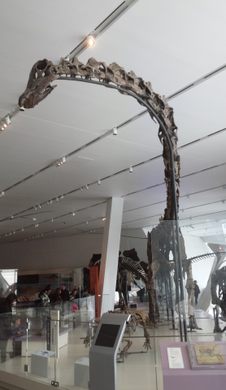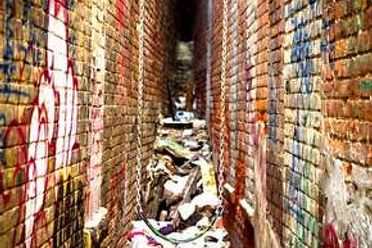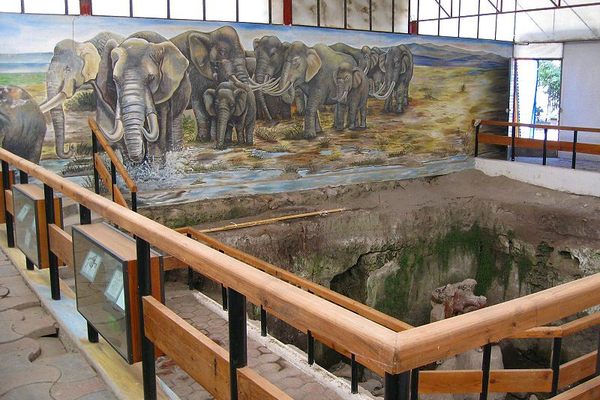AO Edited
Gordo the Barosaurus
Canada's largest dinosaur skeleton was hidden away in storage for more than 40 years.
At the Royal Ontario Museum in Toronto, one specimen dwarfs everything else in it: a 27-and-half-meter long dinosaur skeleton. His name is officially ROM 3670, but he’s more commonly known as Gordo, and he’s the largest mounted dinosaur skeleton in Canada, rivaled only by a Futalognkosaurus installed in the lobby. However, Gordo stands out because he’s got real bones in him.
Gordo is specifically a Barosaurus, one of the larger of the sauropod dinosaurs. At 66 tons, it indeed lived up to its name, which comes from barys, the Greek word for heavy. It lived among its closest relatives Diplodocus and Apatosaurus 150 million years ago in western North America in what would become the Morrison Formation. However, by simple bad luck, not many fossils have been found of these ancient lizards.
Gordo’s story picked up in 1912, when some lucky fossils were found in Utah by paleontologist Earl Douglass under the employment of the Carnegie Museum of Natural History. At the time they were believed to come from Diplodocus. They were found in a quarry in what would one day become Dinosaur National Monument. For the longest time, they’d stay there, but in 1962, they were sent across the border to Canada and the ROM in a trade deal. The museum’s curator Gordon Edmund, planned to have them installed in an upcoming renovation planned for 1970. However, space was limited, and they disappeared separately into the museum’s vast collections. Twenty years later in 1990, Gordon died.
It wasn’t until 2007 the seeds were truly planted. The ROM’s curator, David C. Evans, had been put in charge of creating a new dinosaur gallery for it, and among the dinosaurs selected was a sauropod. Problem? As far as it knew, it had no sauropod in the collection. They looked for solutions, such as a new expedition to find one or mount a cast of actual fossil specimens. But lo and behold, Evans finally managed to learn about them when on a plane trip to Wyoming.
Evans was reading up on an article penned by Carnegie’s longtime sauropod expert Jack McIntosh. He had discovered they were from Barosaurus and not Diplodocus as was long thought.
“It was an exciting day,” Evans said in a 2007 press release. “We were searching for an iconic sauropod skeleton, and we had one under our noses the whole time. When all the parts were pulled together, we realized just how much of the animal the ROM actually had – the better part of a skeleton of a rare, giant, dinosaur.”
Of course, finding Gordo was one thing. Building him was another. To do this monstrous task was fellow Ontarian institution Research Casting International, which specializes in mounting fossils for museums.
Gordo made his debut that year along with the rest of the dinosaurs of the Temerty Galleries of the Age of Dinosaurs. He is joined by other dinosaurs of Jurassic North America, specifically Allosaurus and Stegosaurus, and the smaller herbivores Camptosaurus and an armored nodosaur.
Today, Gordo remains a fascinating, iconic exhibit, literally: he is labeled as one of the museum’s iconic specimens, along with the mural The Paradise of Mateiya, a pair of totem poles from British Columbia, a 900-carat gem from Namibia known as the Light of the Desert, and a statue of the Egyptian war-god Sekhmet.
Community Contributors
Added by
Edited by
Plan Your Trip
The Atlas Obscura Podcast is Back!






















Follow us on Twitter to get the latest on the world's hidden wonders.
Like us on Facebook to get the latest on the world's hidden wonders.
Follow us on Twitter Like us on Facebook